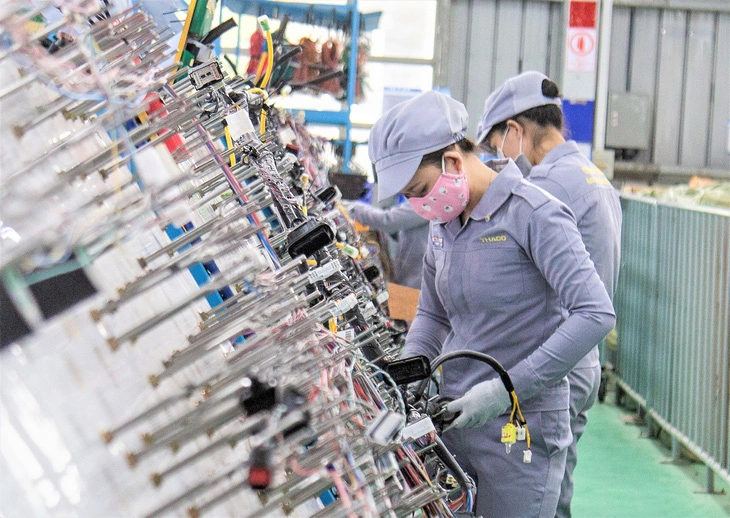Some 2,000 companies are expected to be capable of supplying directly to assemblers and multinational corporations by 2030. To develop the supporting industry, Vietnam approved Resolution 115/NQ-CP to promote the development of supporting industries for the period 2020-2030. The development of the supporting industries focuses on the following fields:
- Electronics industry;
- Mechanical engineering industry;
- Hi-tech industry; and
- Automotive industry
Electronics
Current supply
The supporting industries for electronics account for over 80 percent of the value. Despite the impact of lockdowns, restrictions, and disrupted supply chains, the electronics market witnessed several large enterprises in the electronics industry continuing to invest or expand production in Vietnam, especially in Northern provinces such as Bac Ninh, Hai Phong, Bac Giang, Thanh Hoa, and Da Nang.
Samsung has already invested over US$17.5 billion in Vietnam, accounting for more than 20 percent of Vietnam’s total export turnover through its main products of high-end mobile phones and electronic components.
While electronic businesses are automating machinery and equipment, there is still a shortage of labor, including skilled and unskilled workers. In addition, most Vietnamese workers are inadequately trained, making it challenging for electronic businesses.
Mechanical engineering
Current supply
Vietnam’s total mechanical engineering market demand is predicted to exceed US$300 billion by 2030, yet the country’s mechanical engineering sector currently only fulfills around one-third of the country’s mechanical product demand.
The capability for supporting industry businesses in the field of mechanical engineering remains limited. Manufacturing linkages in sectors such as automobiles and motorcycles exist in a number of significant industries in the mechanical engineering industry. However, this link is still unstable because the majority of raw materials and accessories are still imported. Even large brands mostly assemble in Vietnam for on-site consumption.
Automotive
Current supply
Vietnam’s automobile industry has grown significantly in recent years thanks to the country’s fast-growing middle class. The main auto supply markets for Vietnam in 2021 were Thailand and Indonesia; these two markets together account for 82.3 percent of the country’s total auto imports.
However, the production and assembly of automobiles is at a basic level of assembly with specialization between producing and assembling still lacking.
The reason for the weakness is partly due to the limited level of technical technology, which does not meet the strict requirements of joint ventures. Another reason is the lack of production specialization, leading to components produced in Vietnam costing two to three times more than other countries in the region.
In addition, the production and business environment of the automobile industry lacks favorable policies with certain limitations. For example, for credit policies, FDI enterprises operating in the same supporting industry often borrow from the parent company, or from a foreign bank with an interest rate of only 1 percent to 3 percent, while Vietnamese enterprises must borrow interest rates of 8 to 10 percent.
High-tech manufacturing
Current situation
According to the MoIT, a number of high-tech projects were implemented between 2011 and 2020, supporting businesses in mastering new high-tech innovations and creating considerable socioeconomic advantages.
With investments in chip and smartphone production and R&D from Samsung, Microsoft, Intel, and LG, Vietnam has emerged as an investment hub in the high-tech industry. The prime minister issued Decision No.10/2021/QD-TTg in March 2021, outlining the criteria for defining high-tech firms, which became effective on April 30, 2021. This legislation applies to firms in Vietnam that manufacture high-tech items or provide high-tech services.




